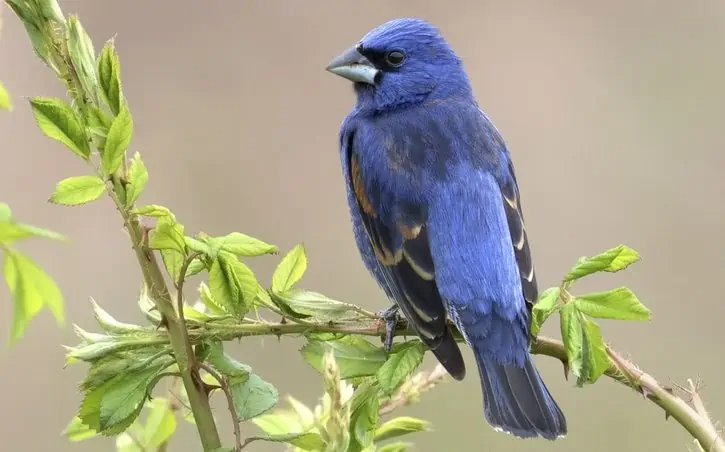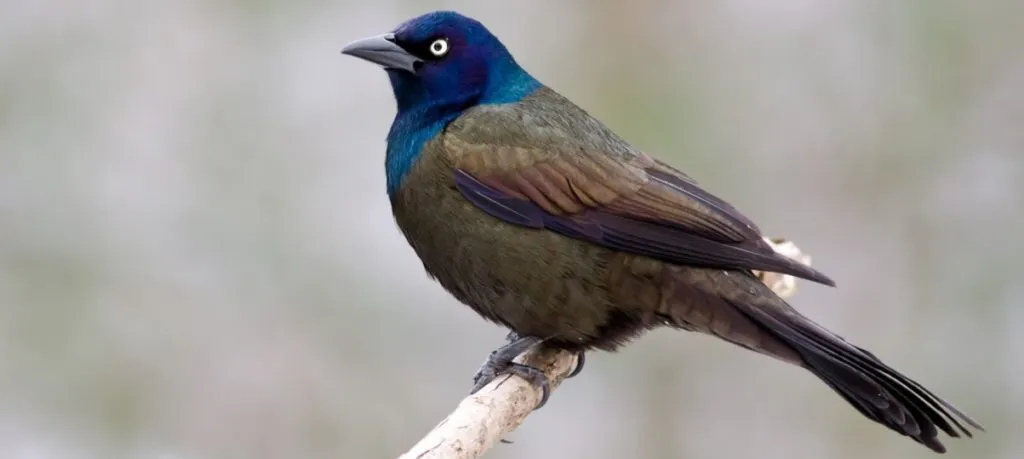Types of Blue Birds-5 Types Of Blue Birds
Types of Blue Birds If you live in North America, you have probably seen a few different types of bluebirds in your lifetime. However, what is an actual bluebird? Is it an actual species of bird? Are all bluebirds, bluebirds? What about the blue jay? What other types of bluebird could be included in this category?
This article will answer all of these questions and more. In addition, it will give you the most in-depth look at bluebirds and other blue-hued birds outside of grabbing your binoculars and taking them to the woods yourself. Let’s take a look at 6 bluebirds and see if they fit the bill.
What Are The Blue Birds Called?
If you’re talking about the literal Bluebird, there are three varieties of the Bluebird. Those three types of bluebird are the Eastern Bluebird, the Western Bluebird, and the Mountain Bluebird. We’ve given a detailed description of these Bluebirds below. It can be quite confusing to see Bluebirds if you aren’t familiar with their appearance.
This is because the only one of the three that is always blue is the Western Bluebird.
Do Bluebirds Still Exist?
Yes, Bluebirds still exist However, there are several species of birds who have been known as bluebirds that are no longer in existence or are heavily threatened and on the brink of extinction. One of these is the Blue Macaw, a very vibrant bird who was called the bluebird in parts of the world.
There are assumed to be less than a few thousand Blue Macaws in captivity, and there are none found in the wild. This large Northern Brazilian bird has a long life span, but due to the loss of Blue Macaws in the wild, it is unknown if they will be able to be bred back from extinction while in captivity.
However, in a surprising turn of events, private citizens began to set up nest boxes for the birds who visited their homes, and it brought the Eastern Bluebird back to low, but tolerable, numbers. Following this, the Everglades National Park started a program to attempt restoration of the Eastern Bluebird numbers in the U.S.
However, the program has been unsuccessful at restoring any substantial amount of birds and has thus been considered a failure. They aren’t giving up though, they have further studies underway and plan to attempt another restoration program for the Eastern Bluebird as soon as they have hard data that supports another round.
Indigo Bunting

Types of Blue Birds
Smaller than the Eastern Bluebird, the Indigo Bunting has a thick, finch-like bill. Breeding males are entirely blue, while females and juveniles are brown, and look like sparrow-sized finches. The Indigo Bunting is known for its cheerful singing all over North America.
Interestingly, they learn their song as a juvenile, and all of the Indigo Buntings living in the same area have a nearly identical song. The Indigo Bunting also migrates at night using an internal clock to direct them, as scientists have studied and concluded.
The Indigo Bunting forages for seeds and insects in low vegetation.
They live in woodlands and the edges of woodlands all across North America. They can be found everywhere from Manitoba to Nova Scotia, but they prefer to live in the Southern U.S during the non-breeding months because of the mild climate that it offers.
- The Indigo Bunting is around the size of a sparrow when fully grown.
- The breeding male Indigo Bunting is the sole bluebird. The females and juvenile Indigo Bunting are brown.
- Studies on their internal clock have been conducted but the Indigo Bunting migration is still largely a mystery.
- Found everywhere in North America, they typically migrate to the southern U.S in non-mating months.
Blue Grosbeak

Types of Blue Birds
The breeding male Blue Grosbeak is a stocky songbird that is blue overall and has chestnut-toned wing bars. Females and juveniles are cinnamon-colored, stocky, finch-like birds with brown wing bars. The Blue Grosbeak has a large triangular bill that seems to cover the entire front of its face.
Males have a tiny black mask drawn into their coloring. The Blue Grosbeak lives in old fields that grow back into woodland. They feed on berries seeds and insects. They also live in thickets and seascapes, including seaside brush, where they’re hard to detect. Typically you won’t see them, but you will hear them singing from their brushy perches.
- The male Blue Grosbeak is a bluebird, while the females and juveniles are cinnamon-colored.
- The Blue Grosbeak has a large and noticeable beak that covers the entire front of its face.
- The Blue Grosbeak lives alongside rivers, oceans, ponds, and rivers in thickets and brush.
Lazuli Bunting

Types of Blue Birds
The breeding male Lazuli Bunting is a small, stocky songbird with a cone-shaped bill. They also have a sloping forehead and are a brilliant blue above a pumpkin-colored breast and white belly. Females and juveniles feature a warm brown upper with blue tints on wings and tail, with pale cinnamon breasts.
They love to perch and sing and spend the majority of their time hopping between low branches and foraging the ground for seeds and insects.
Like many of the birds listed here, they can be found nearly everywhere in North America, excluding the migratory season.
- The Lazuli Bunting male is a brilliant blue tone, but the females and juveniles only have blue tints on their wings and tail.
- A close cousin to the Indigo Bunting it is a more royal shade of blue.
- The Lazuli Bunting makes a nest of loose grasses and places it in a bush to provide a home for its young.
- The Lazuli Bunting is a small bird, only about 5″ in length when fully grown.
Blue Jay

Types of Blue Birds
The Blue Jay is a robin-sized bird with a white or gray underside, and various shades of blue-black, and white above. Their crest makes them easily recognizable to a great deal of the population. Their favorite food is acorns, and they are commonly believed to be responsible for planting a huge percentage of the trees alive today.
They live around forest edges because of this love for acorns, so they can devour their favorite food quietly among the trees. The Blue Jay is a common, large songbird known by almost everyone even those who aren’t interested in birds. They are intelligent birds with complex social skills.
Thousands of Blue Jays migrate in flocks along the Great Lakes and Atlantic coast, but their migratory pattern is still a mystery. They are known for taking and eating the eggs and nestlings of other birds. They often mimic the calls of various species of hawks. Blue Jays are known for lowering their crests while eating with family or flock members.
- Blue Jays are well known for protecting their nests and young against threats and predators. They also attack the nests of other bird species and will eat both the eggs and young of the other bird species.
- The Blue Jay is one of the most well-known bluebirds on the planet and has great popularity and protected status all across North America.
- Although they have studied the migratory patterns of the Blue Jay for many years, it is still a mystery why they migrate when they do and to where.
Belted Kingfisher

Types of Blue Birds
The Belted Kingfisher is a stocky, large-headed bird with a shaggy crest and a thick bill. The female Belted Kingfisher is gray with a chestnut belly band, while the male is bluish-gray with a white collar and blue-gray breast band. The Belted Kingfisher is an interesting bird, because, much as his name implies, he fishes for his food.
The Belted Kingfisher will dive into a body of water for fish, amphibians, and reptiles to eat. They live near rivers, streams, and ponds all over North America, Central America, South America, and the West Indies.
In addition, their breeding habits are also quite interesting and different. They dig their nests into the bank near the body of water of their choosing, and it becomes a tunnel-like birthing chamber and nursery. They emit a loud, rattling cry that makes them quite recognizable simply by their call.
The Belted Kingfisher has a life span of between 6 and 14 years in the wild, and they are protected by legislation to ensure that their numbers don’t dwindle. Therefore, they have a relatively comfortable population that spends its mating months all along the coasts, rivers, and waterways of North America, then wintering in Mexico and South America.
- The Belted Kingfisher dives into the water to get his meal and consumes fish, amphibians, and reptiles regularly.
- The Belted Kingfisher doesn’t nest in trees or bushes, it digs into the bank of a body of water, creating a tunnel-like nest for its offspring.
- These birds enjoy a large population that is found all over the Americas and the West Indies.
Read More Article: Do Birds Have Sex
Read More Article: Do Birds Have Teeth
Read More Article: Purple Birds-10 Purple Bird Breeds
Read More Article: Are Bats Birds
Read More Article: Green Birds- Here Are10 Green Birds
Read More Article: Can cats eat raw chicken






